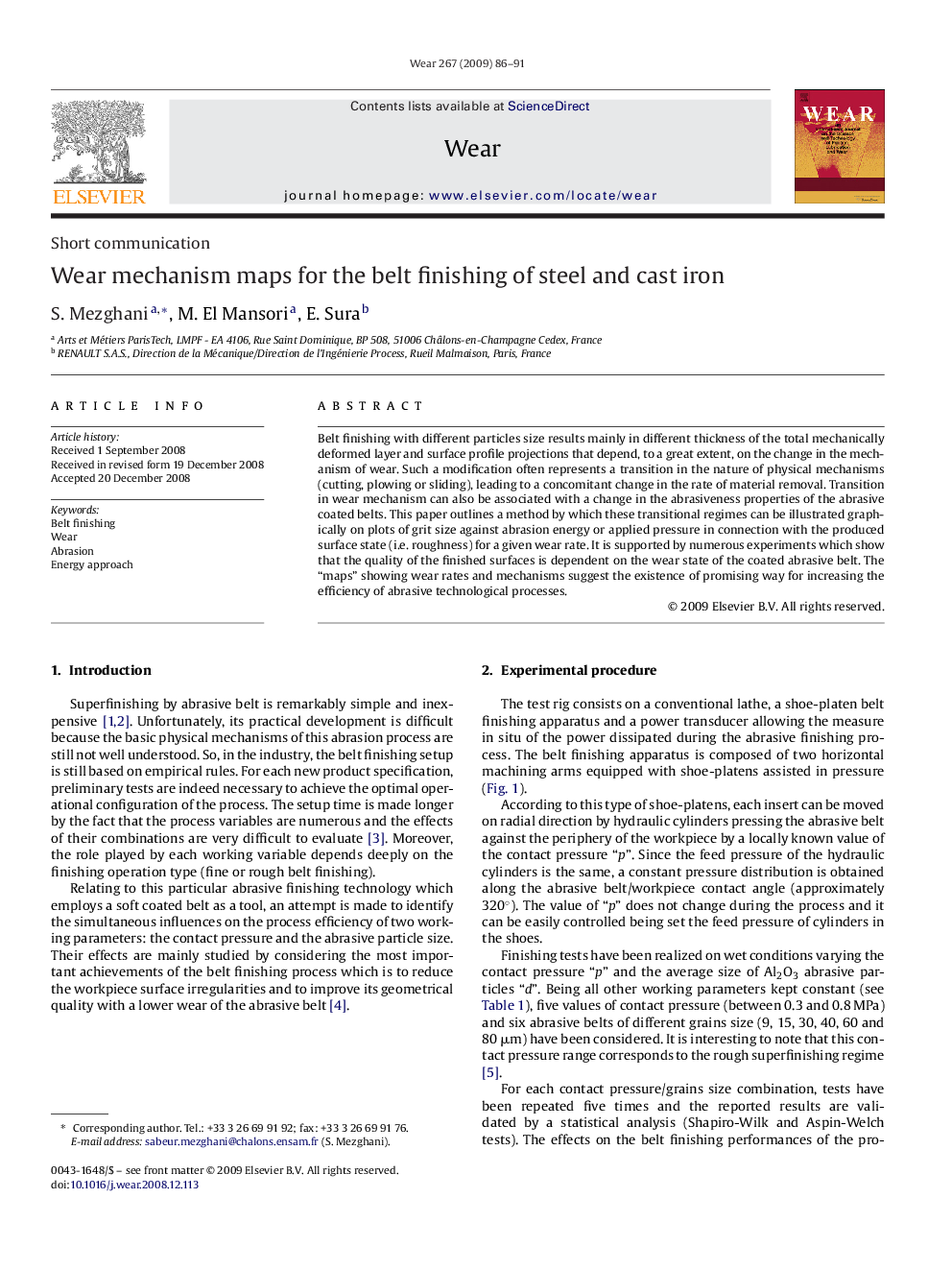| Article ID | Journal | Published Year | Pages | File Type |
|---|---|---|---|---|
| 618706 | Wear | 2009 | 6 Pages |
Belt finishing with different particles size results mainly in different thickness of the total mechanically deformed layer and surface profile projections that depend, to a great extent, on the change in the mechanism of wear. Such a modification often represents a transition in the nature of physical mechanisms (cutting, plowing or sliding), leading to a concomitant change in the rate of material removal. Transition in wear mechanism can also be associated with a change in the abrasiveness properties of the abrasive coated belts. This paper outlines a method by which these transitional regimes can be illustrated graphically on plots of grit size against abrasion energy or applied pressure in connection with the produced surface state (i.e. roughness) for a given wear rate. It is supported by numerous experiments which show that the quality of the finished surfaces is dependent on the wear state of the coated abrasive belt. The “maps” showing wear rates and mechanisms suggest the existence of promising way for increasing the efficiency of abrasive technological processes.
